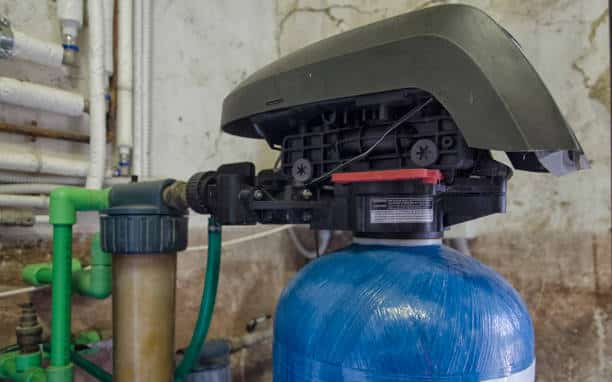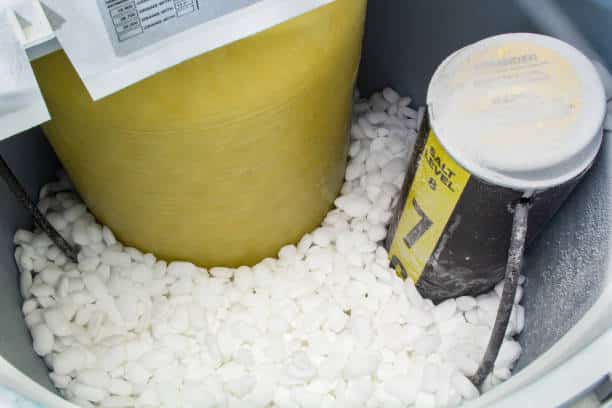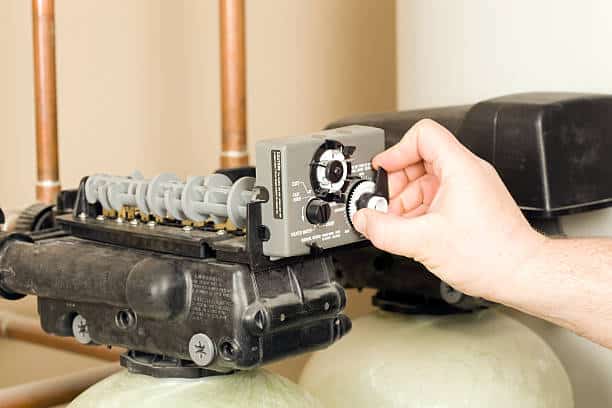Do you have a water softener? If so, it’s critical to understand how much water your softener wastes, as it may affect your house’s water usage and spending. Many homes require water softeners, but they do have a disadvantage.
Water wasting is one of the main issues with water softeners. According to some estimates, they are said to waste anywhere from 3 to 10 gallons of water a day.

How do water softeners work?
In a conventional water-softening system, sodium ions replace the calcium and magnesium ions removed from hard water. While sodium does not affect the performance of household soaps and detergents, calcium and magnesium ions do.
Detergents can clean clothes and dishes more effectively, thanks to the water-softening process. Additionally, it helps soaps make your skin feel slick after washing.
Most water softener manufacturers advise that you use less soap and detergent after installing a water softener.

Types of water softeners
The following three categories of water softeners are available:
Ion exchange
It is the most popular water softener and is widely used in homes. It swaps out the calcium and magnesium metal ions with sodium ones. When utilizing water containing calcium or magnesium ions, negative side effects do not occur when using sodium ions.
The system requires a large tank filled with salt pellets to function before the hard water is added. The water will become softer due to a reaction whereby the sodium ions in salt replace the calcium or magnesium ions in the water.
Reverse osmosis
A semipermeable membrane in the device allows water to pass through it while filtering out around 98% of contaminants. It is quite expensive and consumes a lot of water. However, it works very well at eliminating chemical contaminants like calcium, magnesium, and others.
Salt-free
Because it removes calcium via a mechanical filter, the device has several drawbacks. It is useless with water containing magnesium – as it cannot get rid of the metal. As a result, it doesn’t function all that well with hard water. Its primary function is to remove calcium from hard water.
How do you stop wasting with a water softener?
One method is setting your water softener to renew only when necessary. It will reduce the amount of water wasted each day as a result of this. Up to 7.5 gallons of water may be saved each minute using a water-saving shower head. This translates into daily water savings of up to 45 gallons. By just changing your shower head, you may save a significant amount of water.
Installing a low-flow toilet is another fantastic water-saving strategy. A low-flow toilet can save up to 1.6 gallons of water per flush. This translates to daily water savings of up to 30 gallons.
These are just a few techniques you may use to conserve water in your house. Daily water use can be significantly adjusted by following a few easy actions.

Why does a water softener regenerate?
Positively charged sodium ions are completely absorbed into the resin bed of the water softener. Calcium and magnesium ions are drawn to the resin beads as hard water passes through the resin tank, and at the same time, equivalent amounts of sodium are released into the water, effectively swapping the hardness minerals with sodium.
The resin beads will eventually release all their sodium ions and become completely saturated with hardness minerals. The softener must undergo a regeneration cycle to remove the hardness minerals and refill the resin with sodium.
A water softener would last much less time without regeneration. When the resin runs out, you would need to replace it entirely with fresh resin, which would cost money. Flushing the resin and automatically replenishing it with additional sodium is more economical.
How many gallons of water are needed for water softener regeneration?
A water softener needs between 50 and 100 gallons of water to regenerate. This number assumes that the water softener is a typical single-tank system for a family of four.
The quantity of water required for regeneration depends on a few factors, including:
- Water hardness in your home: The harder your water is, the more water is needed for regeneration.
- How large the system is: It makes sense that you will need more water to regenerate the resin if your water softener has a larger resin and brine tank than the norm.
- The system’s effectiveness: Although you will always need water for this process, makers of water softeners are getting better at developing more effective systems than ever before, wasting less water during regeneration.
- The setup of the system: Water is required to regenerate each of the two resin tanks in a dual-tank electric water softener. Regeneration requires less water in a single-tank system.
Conclusion
Many households require water softeners as essential appliances. But daily water loss from water softeners can be substantial. There are a few things mentioned above that you may do to lessen the quantity of water your softener consumes if you’re worried about how much water it’s using.

Jay
Jay is a health and wellness enthusiast with expertise in water quality and nutrition. As a knowledgeable advocate for holistic well-being, Jay successfully manages Type 2 Diabetes through informed lifestyle choices. Committed to sharing reliable and authoritative insights, Jay combines firsthand experience with a passion for enhancing health."

